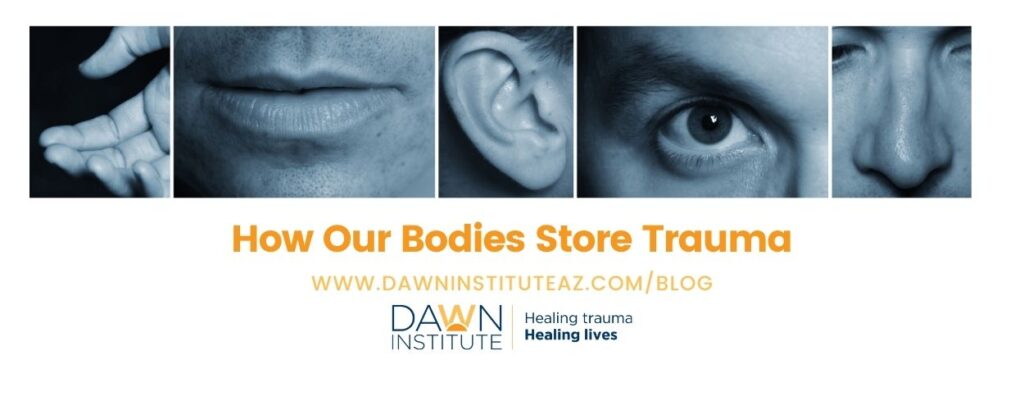We now have more scientific evidence than ever showing the relationship between the mind and body. Most of us understand how diet can influence mental health (example: giving a child a sugary snack before bedtime). However, we also need to understand the very real physical effects of psychological stress and trauma on the body, particularly with trauma that hasn’t been fully processed or even acknowledged by the person who experienced it. Unprocessed trauma may get “stored” or “stuck” –not just in our subconscious mind and memory–but throughout our physical being.
Trauma is Trauma: Big or Small
Most of us will experience some sort of trauma. Some studies estimate 70% of US adults have experienced some type of traumatic event at least once in their lives. And while trauma is a word we often associate with a violent attack, rape, abuse, or near-death experience, the reality is there are a range of other less obvious experiences that can be traumatic and that have the potential to disrupt our lives. As Dr. Crystal explained in her Healing Trauma blog, we can think of these as big-T and little-T traumas.
Effects of Unresolved Trauma
The problem is that the effects of any type of trauma may not resolve on their own and may extend far beyond the actual event. Physical manifestations of stress and trauma on the body can lead to issues like tension, heart palpitations, trembling, pain, weakened immune systems, and more. Dr. Crystal has had clients who felt disconnected from a part or portion of their body, causing imbalances in everyday activities and life.
Trauma-focused Therapy
Trauma-focused therapies that may be particularly helpful when trauma is being “stored” in the body include eye movement desensitization and reprocessing therapy (EMDR) and somatic experiencing.
With EMDR, therapists guide patients through guided eye movements while asking them to recall certain events and then shifting their thoughts to more pleasant events, which is meant to lessen the power of past trauma by taking this stress response that is always on and quieting it down.
Somatic experiencing is a body-oriented therapy that assesses where a person is stuck in the fight, flight, freeze, or collapse responses and work through these responses find resolve from these physiological states. Both EMDR and somatic experiencing have been shown in studies to be beneficial for the treatment of trauma and PTSD.
Having an emotional release in and of itself isn’t necessarily beneficial if you don’t know how to handle these emotions, body sensations, and memories. At Dawn, we are here to help you carefully unravel and safely process through the trauma and its effects. Contact us today for support.

